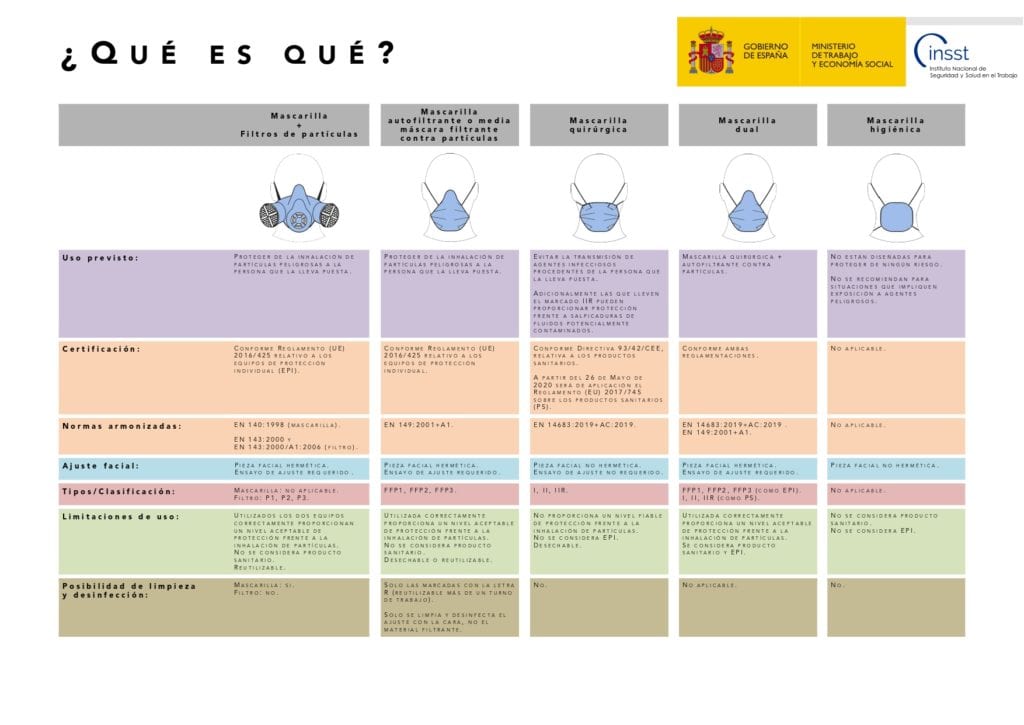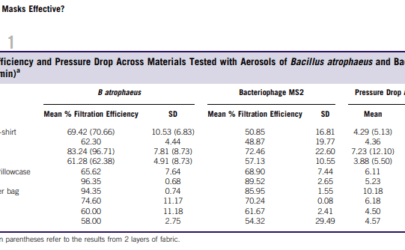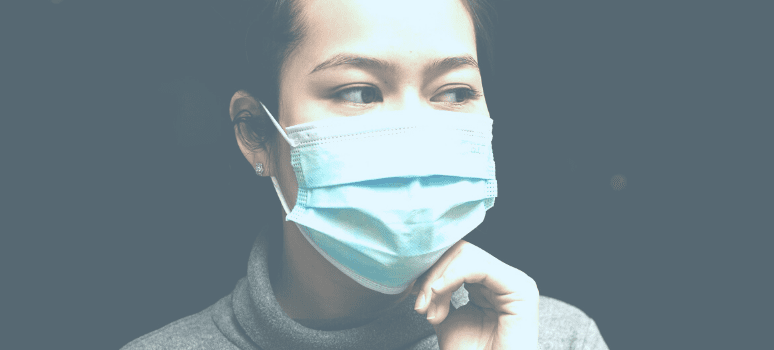Face masks protect us from contracting diseases and prevent us from infecting others. But not all face masks are the same, nor do they insulate us from all diseases in the same way. We will tell you which ones are the most effective against the covid-19 and how you should use them when you leave the house.
The number of messages we have been receiving since the beginning of the state of alarm, as well as the health terminology we use, can prevent information from reaching the public in an adequate manner and, on occasions, we do not know the best way to act. At Biosalud Day Hospital we see that this is happening, for example, with the use of the masks during the covid-19 pandemicSo we want to help you find the best form of protection.
First of all, what are the differences between the different types of masks? The level of protection and re-use are two important factors that we must be clear about, no matter what mask we wear.
Before describing the types of masks and their characteristics, let us clarify what the term FFP stands for. FFP stands for 'filtering facepiece' or 'particle filtering mask'. The number refers to the level of protection. Thus, FFP1 has a low efficacy against infectious agents, FFP2 a medium efficacy and FFP3 a high efficacy. Certification in each of these types is obtained on the basis of the tests carried out, and is independent of the design or the material used for their manufacture.
On the other hand, when we read P1, P2 or P3, this is terminology referring to the effectiveness of the filters.The filtering face masks do not have a filter, so it is only applicable to masks with built-in filters.
TYPES OF MASKS AND THEIR CHARACTERISTICS
- Masks considered as Medical Device (PS)
Surgical mask: is used to prevent the transmission of infectious agents by the wearer. It can protect against splashes of potentially contaminated fluids only if it bears the IIR Mark.
This mask does not fit tightly to the face. In addition, it is disposable and non-reusable so it cannot be cleaned or disinfected. It is not considered PPE (personal protective equipment) but it is a PS (medical device).
Dual mask: This mask is called a self-filtering or particulate filtering half mask and differs from the surgical mask in that it protects against the inhalation of bioaerosols, solids and liquids. It is PPE (personal protective equipment) and can be certified FFP1, FFP2 or FFP3, and PS (medical device, like the surgical mask).
This mask fits tightly to the wearer's face. It is not reusable and should be discarded when leaving a contaminated area or at the end of a particular task.
- Non-PS masks
Self-filtering or half-mask particulate mask. It is similar in appearance to the dual face mask but cannot be used in the health care setting, although it is PPE. This mask protects the wearer from inhalation of hazardous particles. According to the Ministry of Health, it provides an acceptable level of protection although it is necessary to look at its FFP1, FFP2 or FFP3 classification.
This piece must fit tightly to the face. It is disposable except for those marked with an R, which are reusable for more than one work shift.
Mask + particulate filter. These masks have very recognisable filters attached to them and protect the wearer from inhalation of hazardous particles and are therefore PPE. The filter can be P1, P2 or P3 and the level of protection they provide is acceptable. However, they are not considered as PS.
This mask must fit tightly and it should be noted that the mask can be cleaned and disinfected but the filters cannot.

On the other hand, there is the hygienic mask. The Ministry of Health considers that are not designed to protect against any risk therefore not recommended for situations involving exposure to hazardous agents. They are not PS or PPE. In this case, what should the masks we are making at home be like?
It should be noted that these masks are more of a 'mouth-covering', even though its manufacture must be within certain characteristics that the government itself facilitated:
- A rectangular piece with folds to cover from nose to chin and rubber bands or straps to tie the mask tightly to the face.
- One of the most important elements is the fabric: the use of conventional non-woven fabric (TNT: textile non-tissé) of 50-60 g/m2 or with a thickness of 0.3 -0.5 mm is recommended. One of the fabrics used for treatment is the 50% viscose 50% polyester blend. This fabric has a high absorption capacity and is used in dressing gauze or, when sterilised, as gauze in surgery. Conventional TNT is biocompatible with healthy human skin. One of the important characteristics in this case is its absorbency. There are other alternative materials, but where do we find them? The guidance published by the Government also suggests suppliers.
The problem lies in the accessibility of materials. The masks that many people, on a voluntary basis, are making at home are made from nearby materials such as cotton fabricsfor example. But do these masks do any good?
Experts agree that they are more protective than if we do not wear them, especially for to prevent the spread of droplets expelled by the carrier person. However, we must be careful because wearing these masks can give us a false sense of security: we must continue to follow all hygiene and distancing measures in the same way.
On the other hand, these masks should be sterilised after each use.
A study published in 2013 in the University of Cambridge journal 'Disaster Medicine and Public Health Preparedness' establishes the level of effectiveness of household textiles as a protective barrier against a bacterium (Bacillus atrophaeus) of between 0.93 and 1.25 microns and a virus (Bacteriophage MS) of 0.023 microns. The most effective type of cloth (see table) is the surgical mask, followed by the filter of hoover bags and kitchen towels.

Is it relevant how long we wear the mask? Neither the Ministry of Health nor the World Health Organisation refer to the number of hours it is advisable to wear a mask in order for it to maintain its effectiveness or not. In this sense, we see that this depends on the qualities of the mask and the use or exposure we have to covid-19.
It is important to follow the hygiene instructions for mask use and general hygiene measures.
The indications of the Ministry of Health for the correct use of the mask are:
- Wash your hands before applying the mask.
- The mask should cover the nose, mouth and chin.
- Avoid touching the mask while wearing it.
- If the mask is not reusable, discard it when wet and in any case after use.
- Do not touch the front of the mask when removing it, do it from the back and wash your hands when you have removed it.
On the other hand, it is important to know that the mask DOES NOT REPLACE any other hygiene and infection prevention measures recommended by health authorities.


